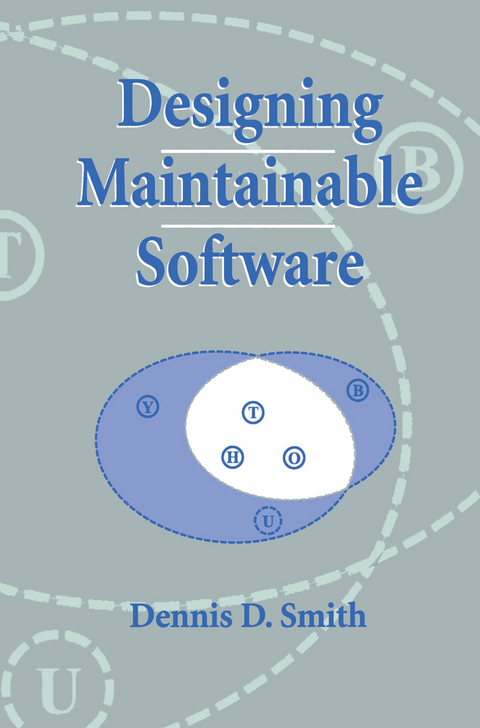
Designing Maintainable Software
Springer-Verlag New York Inc.
978-0-387-98783-5 (ISBN)
This book is about maintaining computer software. Its aim is to improve a pro gram's capacity for altering code to fit changing requirements and for detecting and correcting errors. The book is written primarily for systems analysts and programmers. But others will also find it interesting. Managers will find ways to decrease costs, improve the organization's performance, and lessen its liability exposure. Re searchers will be given principles to expand upon, and will be able to develop techniques for solving new problems that arise in the world of maintenance. Another group to benefit is students. They will be given a foundation from which to write clear unambiguous programs. Software maintenance is an important and timely area of investigation. It is the component that gives an information system its flexibility. It is also the source of many of its problems. Software is costly to maintain. It is the usual cause of system failures and is the frequently cited reason why systems operate in unintended ways. Most software problems are not serious and require only minor repairs. But some have resulted in the loss of significant physical and financial resources. Others have cost lives. The book argues for a new way of thinking about maintaining software. Tra ditional approaches, using software engineering and management disciplines, do not adequately address maintenance issues. What is proposed to solve problems utilizes a set of human factors principles that govern the programmer-software event world interactions and form the core of the maintenance process.
Section I. Facing the Problem.- 1. The Problem.- 2. The Approach.- 3. The Attack.- Section II. Solutions Through Symbols.- 4. Some Basics.- 5. Naming.- 6. Words and Letters.- 7. Abbreviations and Mnemonics.- 8. Language.- 9. Language of Mnemonics.- Section III. Solutions Through Structure.- 10. More on Problem Solving.- 11. Solving Maintenance Problems.- 12. Other Considerations.- 13. Cognitive Structures.- Section IV. Implementation and Testing.- 14. Implementing the Solutions.- 15. Testing.- Section V. Concluding Remarks.- 16. Concluding Remarks.- Appendices.- Appendix A. The Information Age.- Appendix B. Information Systems.- Hardware.- Software.- Appendix C. Software Failures.- Appendix D. Problem Solving.- Appendix E. Software Science.- Appendix F. Sensory Input Processing.- Appendix G. EATPUT Model of the Vision System.- Appendix H. Classifying Information.- Facts and Opinions.- Theories and Processes.- Appendix I. Naming as a Shortening Process.- Appendix J. Miniature Artificial Languages.- Appendix K. Cognitive Grammar.- Overview.- Sentence Construction.- Appendix L. Gestalt Psychology.
| Zusatzinfo | XIII, 169 p. |
|---|---|
| Verlagsort | New York, NY |
| Sprache | englisch |
| Maße | 155 x 235 mm |
| Themenwelt | Informatik ► Software Entwicklung ► User Interfaces (HCI) |
| Mathematik / Informatik ► Informatik ► Theorie / Studium | |
| Informatik ► Weitere Themen ► Hardware | |
| Mathematik / Informatik ► Mathematik ► Finanz- / Wirtschaftsmathematik | |
| ISBN-10 | 0-387-98783-5 / 0387987835 |
| ISBN-13 | 978-0-387-98783-5 / 9780387987835 |
| Zustand | Neuware |
| Haben Sie eine Frage zum Produkt? |
aus dem Bereich


